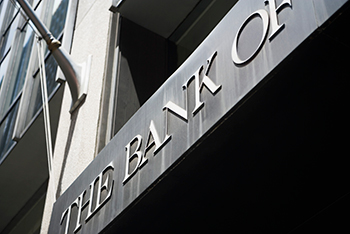 Jan. 13, 2016 – A jury convicted James Eady Jr. for robbing a Milwaukee bank. Recently, Eady lost his appeal, despite his argument that the state failed to prove he robbed a “chartered” bank.
Jan. 13, 2016 – A jury convicted James Eady Jr. for robbing a Milwaukee bank. Recently, Eady lost his appeal, despite his argument that the state failed to prove he robbed a “chartered” bank.
Wis. Stat. section 943.87 says a person is guilty of robbing a financial institution if he or she uses force or threatens to use imminent force to take money or property that is owned by or under the custody or control of a “financial institution.”
“Financial institution” is defined as a bank, “whether chartered under the laws of this state, another state or territory, or under the laws of the United States. …”
Eady – whose note to the teller suggested he would use a firearm to blow the teller’s head off if she did not comply – argued that he could not be found guilty because the state failed to prove an element of the crime: that he robbed a “chartered” bank.
In State v. Eady, 2015AP110-CR (Dec. 22, 2015), a three-judge panel for the District I Court of Appeals concluded that “circumstantial evidence was sufficient to support the jury’s verdict,” although the state did not offer direct evidence of the bank’s charter.
Surveillance video showed the suspect at the Milwaukee U.S. Bank that was robbed. It showed the suspect approach the teller window bearing an “FDIC” sign. FDIC stands for Federal Deposit Insurance Corporation. Witnesses also testified about the events. The bank teller said she handed over $1,500 in cash, which was confirmed by register audit.
Police also found a jacket, hat, and sweatshirt in a yard near the bank. It was the same attire worn by the suspect caught on tape. Ironically, the jacket pocket contained a U.S. Bank deposit slip – not a withdrawal slip – which contained DNA matched to Eady’s DNA. Finally, the teller later identified Eady as the robber through an in-person line-up.
At the conclusion of trial, the court gave a jury instruction noting the state was required to prove, as one element, that U.S. Bank was a bank chartered under state or U.S. law.
The defense moved to dismiss, noting the state did not directly prove the bank was chartered, as required. But that motion was denied and the jury found that Eady was guilty. The appeals court recently ruled that circumstantial evidence was enough.
“Contrary to Eady’s contention that the law requires either introduction of the charter itself or testimony from a witness with ‘personal knowledge’ of the charter, case law holds that circumstantial evidence may suffice to prove an essential element of the crime charged,” wrote Reserve Judge Daniel LaRocque.
The panel noted evidence suggesting the suspect robbed a U.S. Bank that was FDIC insured, and a reasonable juror could have found the bank robbed was “chartered.”
It rejected Eady’s argument that if the state is not required to show direct evidence of a bank’s charter, future people could be convicted for robbing “fake banks,” including ones that provide banking components, like PayPal or Bitcoin, but are not chartered.
“We need not address hypothetical fact situations and limit our holding to the evidence presented to this jury,” LaRocque wrote. “This evidence raises neither any evidence of a fake bank nor of an unchartered bank.”
